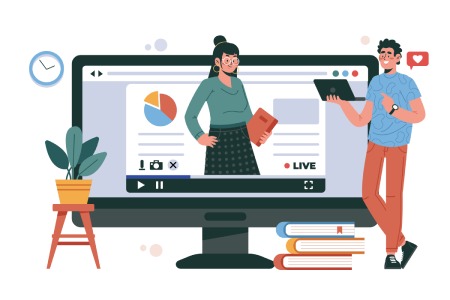Learning is a never ending process. It does not close its door at just school or college. A person can have all the knowledge in this world but can still have a lot to learn yet. And with changing times and improving technologies, economies and market trends, constant and continuous upgradation of skills and knowledge is important. It is irrespective of seniority and experience, there is always something to catch upon to add value.
Adult learning varies highly when compared to any other form of learning, since it depends upon a plethora of factors, a lot of which differ for each individual such as existing knowledge, preferred methods of learning, internal motivation, readiness to learn, etc
Adult learners also bring in their own experiences and aspirations into learning. And their ways of learning are extremely different to those of young learners. Adults have a significantly lesser amount of time available for learning, which also has a significant impact on the reviewing of information learnt but is the most essential step in learning. Which is why it’s critical to have learning methods which can ensure that their learning caters to these factors and becomes easier yet effective.
One such great method of learning is ‘Spaced Learning and repetition’.
If we go by definition, ‘spaced learning is a method of learning that incorporates reviewing information at systematic intervals’. These ‘intervals’ are pre-decided and can vary according to the phase of learning the learner is in. Which helps in a longer retention of the material learned, since it’s being reviewed multiple times.
In this day and age, most of adult learning happens in the form of workplace learning to upskill and educate people. As spaced learning is a great tool for adult learners, it can be highly affecting in making workplace learning more effective and engaging too. Such as contributing towards improved retention, application of knowledge and overall skill development. Which is why it can be a great addition to workplace learning.
Why do learning experiences need to be spaced?

First discovered in the 1880’s by the German scientist Hermann Ebbinghaus. He conceptualised the ‘Forgetting curve’, a graph that portrays the concept of loss of learned information over time.
According to this curve, if information is not actively recalled over time, our brains are unable to retain it resulting in complete loss of that information as time passes.
How and why is spaced learning beneficial?
In a research conducted by the researcher Benjamin C. Storm, he found that our brains hugely rely on forgetting some information in order to retain other relevant information.
The information which is presented just once to the brain is perceived as unimportant and forgotten and on the other hand the information which is frequently presented is perceived as important by the brain and hence moved into long term memory resulting in better retention of that information.
Which is why it’s safe to say that spaced learning and repetition as a learning method is highly effective to improve retention in adult learners. Since it emphasises mainly on repetition of information leading to its better retention.
The traditional education system focuses on feeding too much and too varied information to the brain at once, within 6-8 hours continuously, which leads to an information overload in the brain and retention of very partial information, which is also eventually forgotten.
Therefore, spaced repetition learning if incorporated into adult and workplace learning can reap great benefits.
Every business benefits from upskilling its employees, since in this day and age a skilled employee base is the biggest asset for any company. And to ensure that this upskilling takes place effectively, spaced retention should be implemented to ensure a great and efficient learning environment.
Steps to incorporate Spaced Learning
Now that we have discussed in depth about how spaced learning works and its benefits. Let’s move onto the important part; how to actually apply it in our learning. So, here are some steps through which we can proceed about applying spaced learning in real life.
1. Micro-learning modules
Instead of covering complex topics directly, breaking them into bite-sized, self-contained modules and then presenting them over multiple sessions is a better approach. This is going to help maintain the rhythm of learning, while also allowing people to learn in short bursts and promoting focused engagement. Which in turn will also help in preventing cognitive overload and allowing deeper processing of information.
Zenfide supports businesses in crafting micro-learning experiences with our experts and aligning business goals and learning goals.
2. Spaced Repetition Schedule
Making a strategic repetition schedule is the next most important step. Fixing a schedule that suits your learning strategies while also navigating other life tasks is essential. The research by Ebbinghaus showed that the first few repetitions should be made within the first few days of learning, and as retention becomes better with time, the repetitions can be spaced out longer. Planning spaced repetitions of key concepts at increasing intervals (e.g., after a day, a week, a month) combats the forgetting curve and strengthens memory pathways.
Adding learning to daily routine and not viewing it exclusive to daily workday, can be a value addition. We support you to align and design accordingly.
3. Mixed Learning Approach
Taking a mixed approach in learning i.e., using different modes and methods of learning to make it more fun and easily understandable is the best way to go about. Such as combining online modules with in-person training sessions, this will allow for immediate clarification and application of concepts learned through spaced repetition. Quizzes, surveys, simulations, case studies, games, etc can also be incorporated to encourage active recall while also actively engaging the brain.
Zenfide offers learning solutions in multiple formats combined with relevant techniques and methods, making skills applicable to their daily work routines.
4. Technology and Tools
Incorporating technology and tools specifically designed to support management and time allocation can enable teams to drive productivity and upskill, altogether.
5. Personalized Learning
As we also discussed initially, for adults personal learning preferences regarding methods and ways of learning are also extremely essential to be considered while making any learning program. So, considering individual learning styles and preferences when designing spaced learning activities can prove to be a great asset and make learning actually beneficial for them.
Zenfide aligns learner preferences with business goals, to build a right learning environment and experience.
6. Tracking Progress
Tracking progress is as important as indulging in learning or re-learning a skill , since it enables the organisation and the learning partner to understand what is working and what’s not.
Zenfide’s growth tracking methods enable learners and businesses to have a clear understanding of progress, gaps at present and what interventions can work best.









